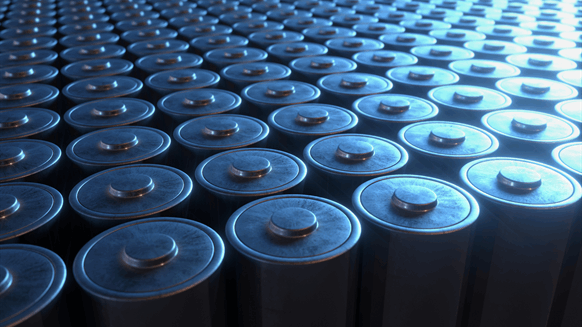Renewable power generation is essential to global decarbonization efforts. But so is the development of energy storage systems that are needed in times when the intermittency of solar and wind power means that energy is not being produced.
Some energy storage technologies are better suited for some services than others. Those with a longer duration of days, weeks, and even months – long-duration energy storage (LDES) – enable cost-effective, deep decarbonization of electric power systems, while ensuring high system reliability.
Lithium-ion batteries have been stealing the spotlight in the electric vehicle and energy storage sectors non-stop for the past few years. However, Wood Mackenzie understands that they are not economically competitive when it comes to long-term energy storage applications, defined as periods longer than eight hours.
In addition, lithium-ion batteries have safety and maintenance issues. Additional measures are needed to predict and prevent thermal runaways in lithium-ion batteries. Finally, the high cost of recycling and the high price of the battery combine to weigh down the sustainability side.
There are several LDES technologies available – redox flow batteries, metal-air batteries, thermal energy storage, and mechanical storage technologies. Each is at a different level of maturity and market readiness.
However, while they are promising, efforts should be made to reduce the costs of such technologies, while allowing them to be deployed on a larger scale to facilitate commercialization.
Redox flow battery (RFB) technology
Redox flow batteries have easy scalability, long service life, and high operational safety, which makes them suitable for stationary storage. The key components of redox flow batteries are circulating electrolytes and a species-selective membrane. A typical limitation of RFBs is the lower energy density, compared to lithium-ion batteries.
All vanadium redox flow batteries (VRFB) and zinc-bromine (Zn-Br) are the most researched and developed RFB chemistries.
The advantages of flowing batteries include flexibility, longer duration, increased safety, lower levels of storage costs, longer asset life, and less concern when it comes to temperatures. around.
VRFB
VRFBs are the most deployed RFB technology to date. However, they only account for a small percentage of the energy storage systems being developed.
Faster market adoption of VRFBs is hindered primarily by cost, including relatively high capital costs – a situation that continues in 2022. Expensive chemicals, due to high and fluctuating price of vanadium and the use of expensive membranes, are also significant challenges.
Rapid scalability is required to reduce costs and realize the potential of this technology. And while some emerging battery developers are developing vertically integrated business models – by entering parts of the raw material supply chain, for example – this trend should accelerate.
On the technical side, there is a need to develop novel membranes with higher ionic selectivity and conductivity. In addition, battery design can be improved to improve efficiency and energy density.
Zinc-Bromine
The zinc-bromine redox battery offers a high cell voltage for water systems, showing a relatively high energy density among flow batteries.
However, there are at least two technical challenges. One is to ease hydrogen evolution and zinc metal dendrite formation, which can reduce performance and cause safety issues. Also, current zinc-bromine systems use expensive chemicals to reduce toxic bromine vapor emissions.
Commercially, more efforts are needed for zinc-bromine redox battery development because VRFBs have been the focus of RFB commercialization work for the past decade.
Metal-air batteries
Metal air batteries are used to store electricity for several days. They have a theoretical energy density that is much higher than commercial lithium-ion batteries.
The materials involved are safe, cost-competitive, and abundant on the planet, using water electrolytes. As a result, the costs of materials and the associated energy costs at the system level are low.
However such batteries do not fulfill their full potential due to challenges related to the metal anode, air cathode, and electrolyte. The round-trip efficiency of metal-air batteries is also lower than lithium-ion and flow batteries.
Thermal energy storage and mechanical storage
Compared to most other forms of storage technologies, thermal energy storage, such as energy storage in hot rocks, shows the advantage of using cheap and abundant materials. The main challenge for thermal energy storage technologies is to convert heat back into electricity in an efficient and effective way.
Pumped storage hydropower and compressed air energy storage are the two most discussed mechanical storage technologies. The energy density of mechanical storage technologies is much lower than that of electrochemical and chemical storage.
In addition, most mechanical storage technologies must be built on sites with suitable topography. For example, a pumped storage hydropower station requires two water reservoirs at different elevations and a slope between the two reservoirs.
In many parts of the world, LDES technologies also face various funding, market, and policy barriers that limit deployment.
To contact the author, email bojan.lepic@rigzone.com
